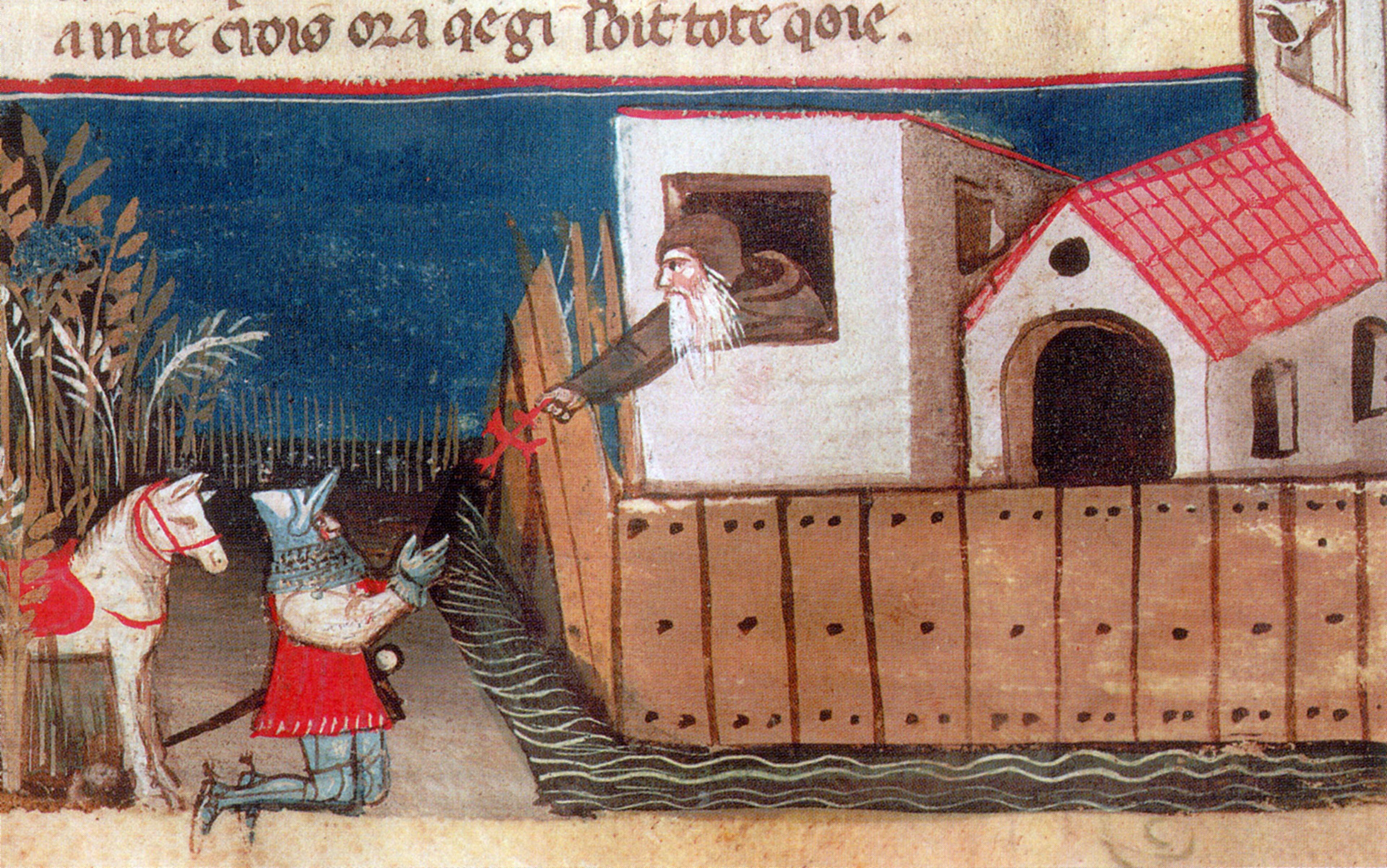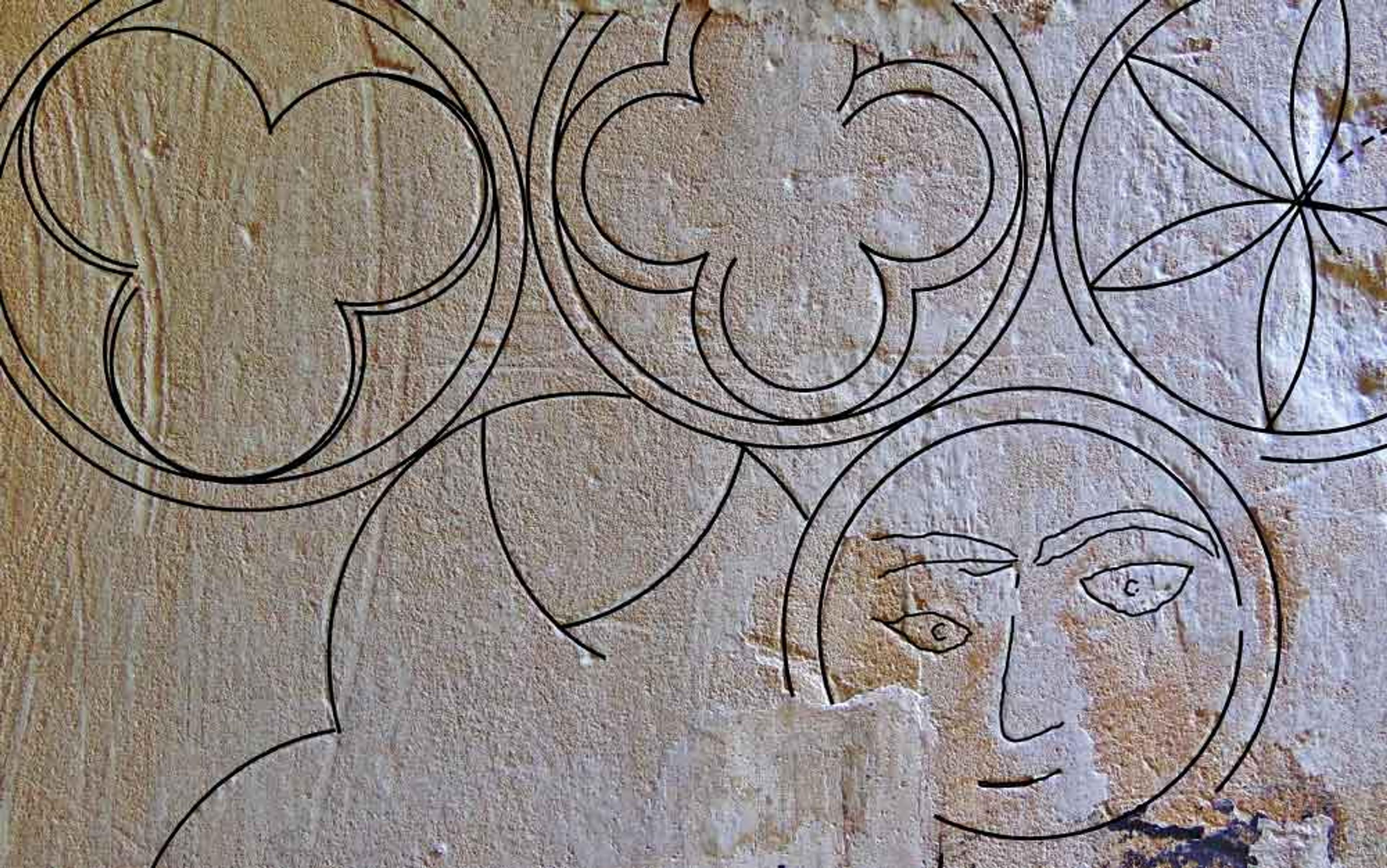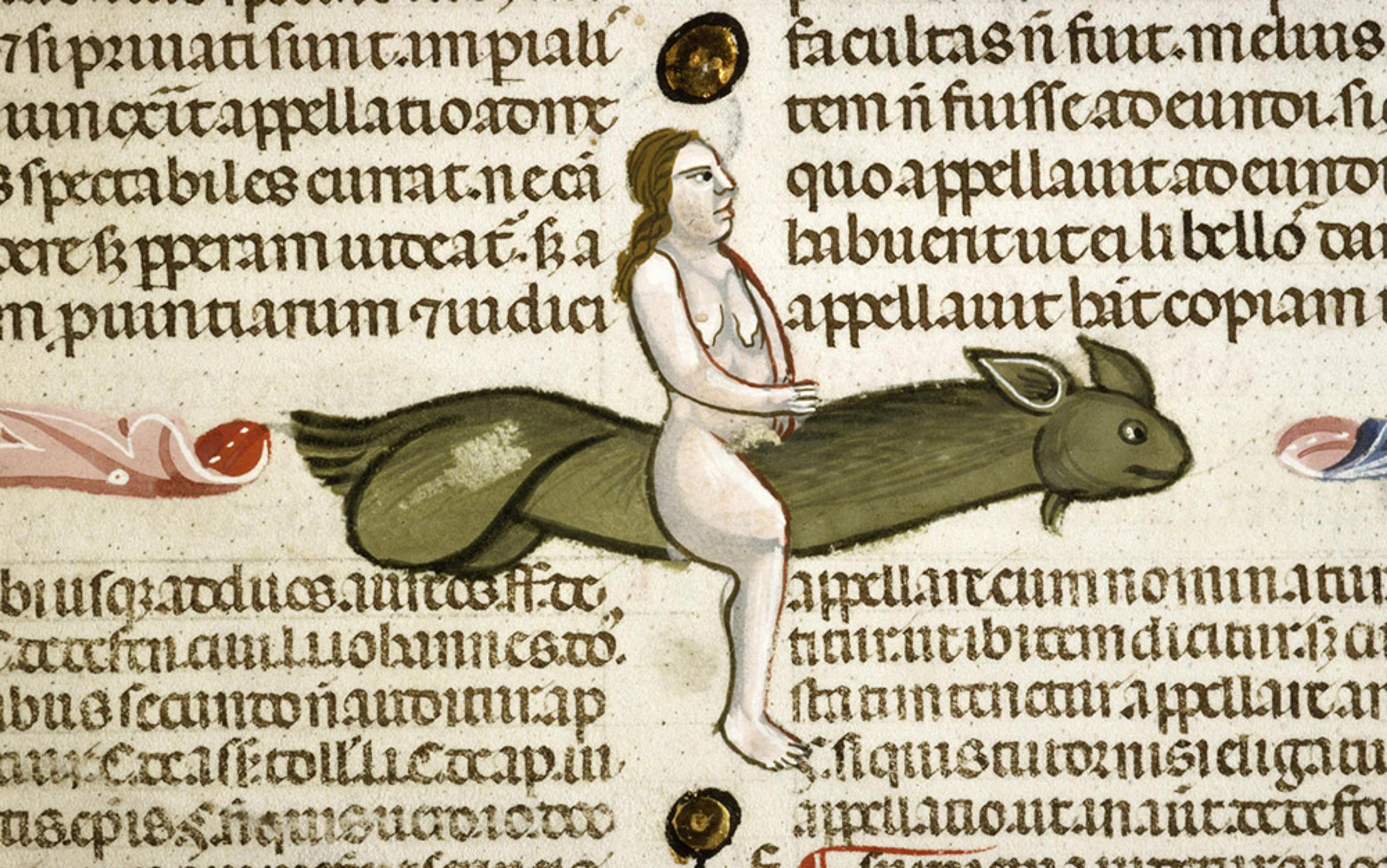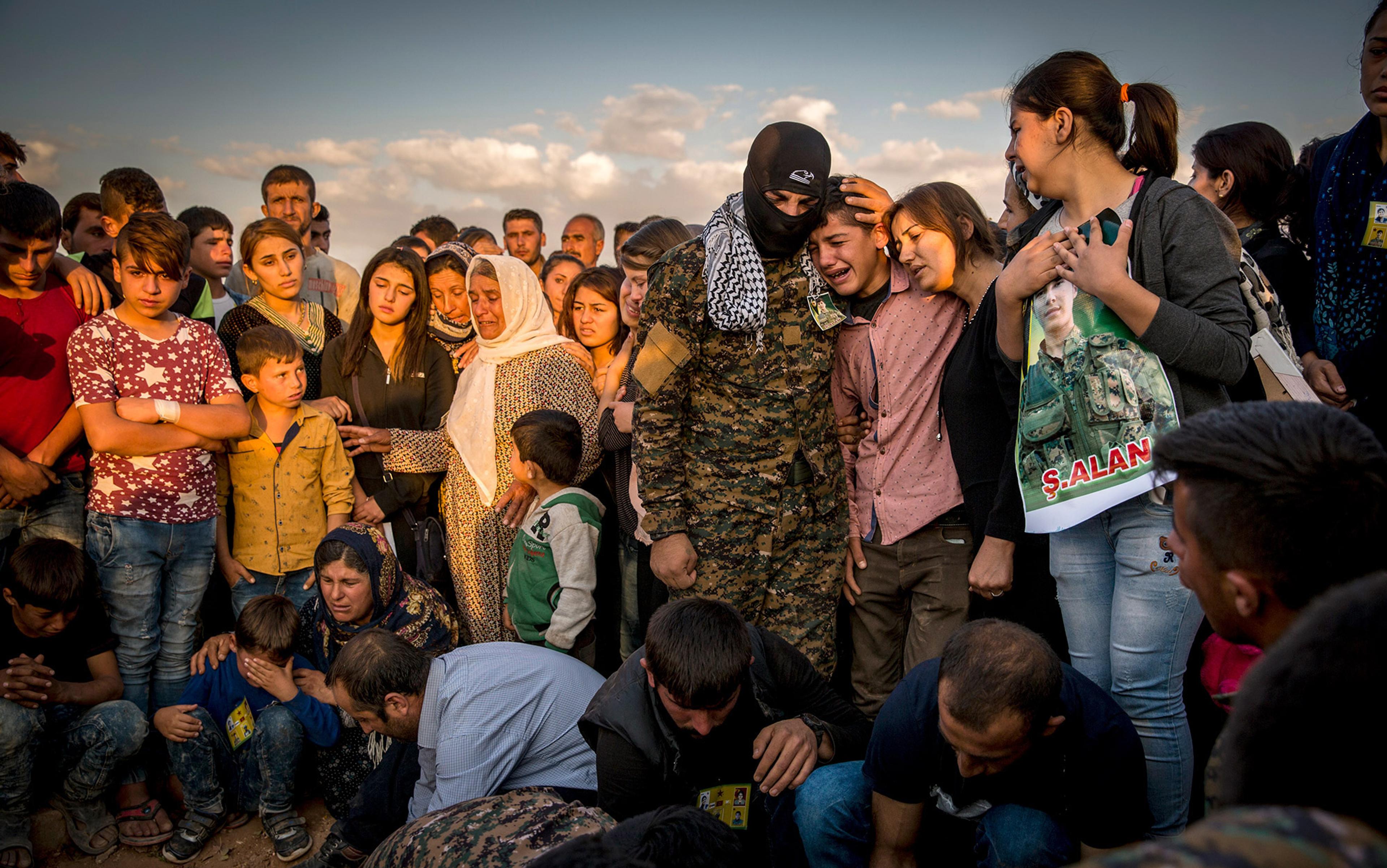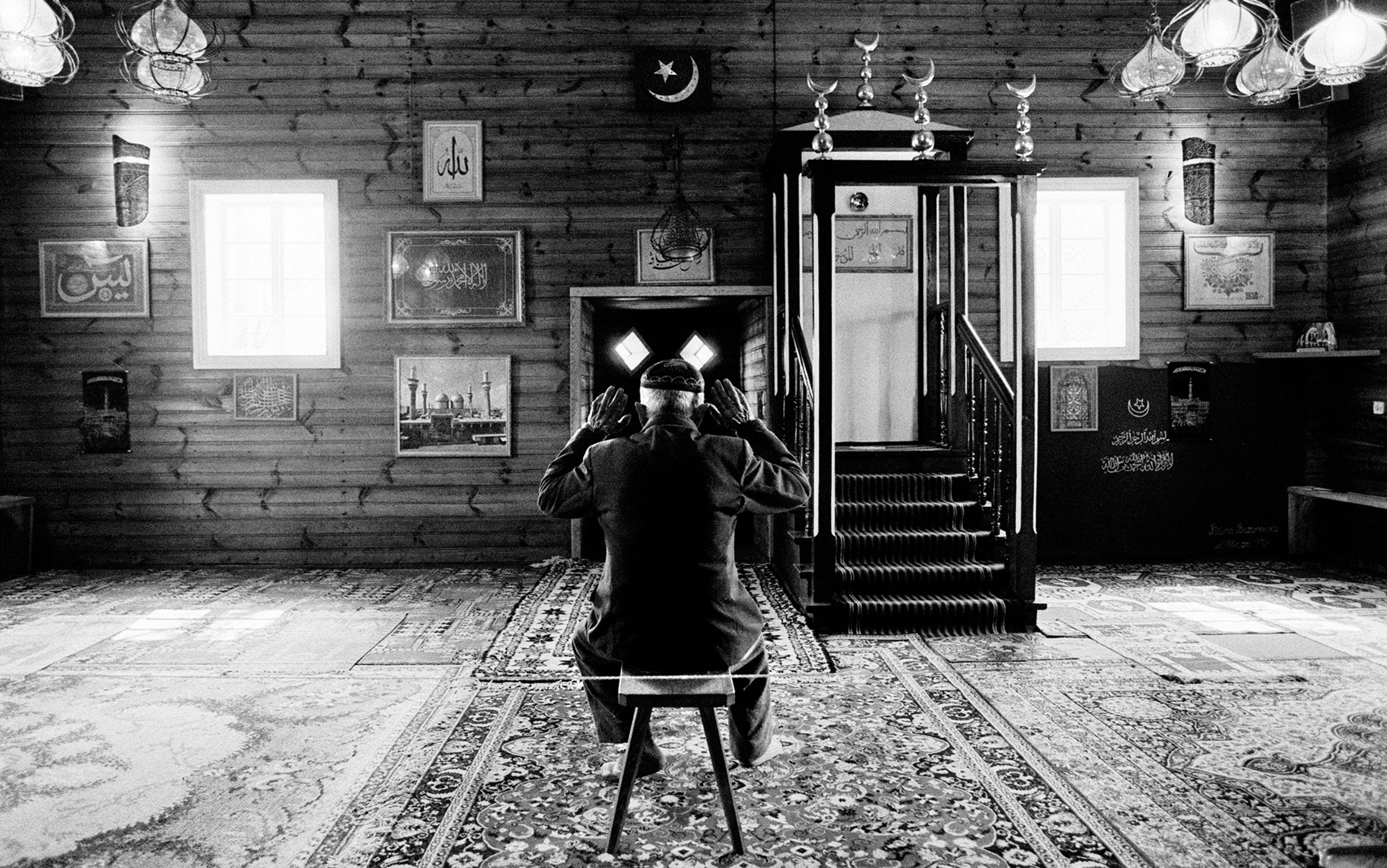From 1096 until 1271, Christians from western Europe waged eight major wars and many smaller military operations in the Near East and North Africa that scholars now call the crusades. The spiritual leaders of the Catholic population, from the popes on down, regarded these expeditions as just and holy wars, in part because they considered the earlier Muslim conquests as unjust incursions into and occupation of Christian lands. Furthermore, they resented the fact that more recently Islamicised Turkic peoples continued to press militarily on the remaining independent realms in the eastern Mediterranean, in particular, the Byzantine Empire, a situation that reached crisis proportions in the late 11th century. In fact, this situation was what prompted the First Crusade, whose recovery of Jerusalem and establishment of new Christian polities, the Crusader States, made it the most successful of all these wars. Christians took up arms with similar justifications elsewhere as well, such as Iberia and the eastern Baltic region. In time, military campaigns against dissenting Christians and enemies of the political aspirations of the Church in Europe also received papal validation as ‘crusades’, which is to say, as just and holy wars.
The Christian soldiers who fought in these expeditions were both pilgrims and warriors. As warriors, the crusaders prepared themselves in carefully orchestrated and choreographed ways before departing Europe and going into battle. This essay addresses the roles that they played in making themselves and their weapons worthy of engaging in holy war, and explores the curious relationship between mercy and their weapons, in particular the dagger.
Crusaders, a term derived from crux, the Latin word for cross, were men who ‘took the cross’ or, rather, received the sign of the cross. In public view, and drawing on far older precedents, they voluntarily accepted a cloth cross, which they wore to publicise their vow to fight the armed enemies of the Christian faithful. Their acceptance of the cross also testified to their recognition of its spiritual power and their own sanctification. The symbol evoked the 4th-century Roman ruler and first Christian emperor, Constantine the Great. His biographer, Eusebius of Caesarea, claimed that Constantine had looked into the heavens before his decisive victory in the Battle of the Milvian Bridge (28 October 312), which guaranteed the commander’s political ascendancy, and saw a shining cross accompanied by words, which Latin sources, incorporating versions of the story, rendered as ‘In hoc signo vinces’, ‘In this sign you will conquer.’ Crusaders, men signed with the cross, crucesignati, drew courage from their trust in God’s aid.
Women could take the crusader vow, but they typically fulfilled it, in lieu of physical participation, by redemption – monetary contributions in support of the expeditions – though scholars know precious little about the rituals accompanying their gifts. Far better documented are the rituals accompanying the men’s vows. They were to receive the sacrament of confession and to put themselves under the safeguard of a saint or saints to protect them. Potential crusaders also made sure that their weapons received appropriate blessings. Lastly, they proclaimed aloud, ‘having called together the[ir] neighbours’, the wills they had drafted, which specified, in the event of death, arrangements for their heirs and an array of bequests, particularly charity for the poor, sick and other deserving categories of people. These gestures confirmed the potential crusaders’ willingness to go to war, leave their comforts behind and forsake their kinfolk and friends, as well as their hope of returning alive and well.
These gestures also served as elements in the warriors’ purification. Unlike some aged or ill pilgrims, who chose to travel to Jerusalem to die, few crusaders deliberately sought out death, but they did wish to be prepared in the eyes of God if it came. None of this is to say that observers and participants were without doubts about the confessional and therefore transformative culture of ‘crusading ethics’, as the historian Jonathan Riley-Smith dubbed the moral code they so carefully articulated. Marisa Galvez, looking at the contemporary romance literature, has written perceptively about how unrepentance was ‘an idiom in dialogue with the immediate cultural climate of penance and confession’, implying that crusaders had a heightened sense of the corruption that threatened them if their sins went unatoned.
Taking the cross could come years before setting out to fight, and circumstances might conspire to prevent individual crusaders or groups from ever fulfilling their vows. Nonetheless, the taking of the cross and the reception of a series of blessings in preparation for eventual departure emerged in the period 1100-1300. They soon coalesced into a formal liturgy, while other ceremonies preceding departure were achieving standard form that borrowed elements from rituals associated with becoming a simple pilgrim. The occasions for taking the cross varied. Notorious sinners, rebels and criminals might do so after having publicly acknowledged their misdeeds. Other people took the cross following rousing sermons, open-air or in church, intended to inspire such acts, or during and after other religious or semi-religious occasions, like Christmas festivities or dubbings, the initiation rites of young men as knights. Each man who publicly vowed to go to war under the aegis of the cross received immediately or soon after the cruciform cloth for sewing on an over-garment. In rare instances, a crusader opted to have himself branded or incised with a small emblem of the cross on his shoulder, much as a soldier nowadays might obtain a tattoo affirming her comradeship with companions and commitment to their cause.
Observers expected the men who promised to go on crusade to enact public redress of grievances
Regardless of how much time elapsed between taking the cross and setting out on the journey, the actions in the immediate prologue to war began with confession. Confession has two meanings here. One is that of sacramental confession – seeking priestly absolution upon the admission of one’s sins. Ordinarily, this form of confession took place at Eastertime, but it was also appropriate during periods of grave illness, which called for extreme unction. Because war always carried with it the risk of death by disease, accident or battle, clergy and laity alike regarded sacramental confession as the proper initial rite in preparing for departure.
Confession as a crusader, however, implied a second undertaking that paralleled sacramental confession, but was typically more elaborate. The faithful hoped that all penitent sinners would supplement their traditional Easter confession by undoing the wrongs they had committed and making restitution for money sinfully obtained. Observers and commentators not only hoped for but also expected the men who promised to go on crusade to enact public redress of grievances. This applied especially to lords and rulers. Conforming to this expectation, Lord Jean de Joinville, the friend and biographer of the French king Louis IX tried to right all the injustices that he or his agents had committed on his estates before he set out on crusade in 1248. In doing so, he also followed the king’s own example.
Accompanying every act were prayers to God and the saints for the success of their mission. The Virgin Mary was pre-eminent, but there was no dearth of alternative or supplementary guardians and battle saints. Pre-Christian Jewish heroes, like David, the slayer and beheader of Goliath, and Judith, the slayer and beheader of Holofernes, could serve. The archangel Michael, who cast out Satan from heaven, was another appropriate figure, as were, Saints Denis, George, Martin, Maurice and Sebastian for various reasons. Sebastian, for example, was appropriate because he had been a Roman imperial soldier, who protected his fellow Christians from persecution and suffered attempted execution for it, in one popular version of his legend, by bow and arrow. In the same way, the bearers of swords, lances, shields, battle standards, and the like, invoked saints whose lives seemed to have common threads with theirs. Many of the rites associated with their invocations, though they drew on longstanding precedents, were new in the age of the crusades.
Medieval warriors, one should add, attempted to empower their weapons spiritually in other ways besides blessings. They hired expert engravers to inscribe them with talismanic formulas mirroring the sentiments expressed in the benedictions, a practice that also drew on older habits of naming favourite weapons and wearing spiritual weapons – amulets with divine names – in battle, a motif enthusiastically introduced into contemporary romances. King Louis IX himself kept a relic – a piece of the True Cross – on his person, a fact that seems to have been widely known. He probably did so for apotropaic purposes, or so one might infer from the report of his contemporary, the English chronicler Matthew Paris, who described how the king’s mother, Queen Blanche, applied Passion relics to him when he was sick in order to restore him to health. Like mother, like son.
While rituals and ceremonies designed to protect and, if necessary, to heal crusaders multiplied in this period, a weapon that has received somewhat less attention in these developments than it should have is the dagger. One can probably explain this relative neglect by the fact that it fell into the catchall category of smaller weapons or the general category of knives, the details of whose sanctification often go unrecorded.
The term ‘knives’ as a category covers a multitude of weapons and, indeed, there were many words for these artefacts. The English word ‘dagger’ seems to be a genuinely native word, although a few etymologists have attempted to assign temporal priority to its usage in other languages. When scholars encounter the Medieval Latin daggerum or Middle English dagger, they translate it unreflectively (and presumably correctly) as dagger, a term that, by convention, describes a cruciform weapon, with a hand-length blade lightly cambered on both sides and neither broad nor narrow, but of intermediate breadth.
The problem is that, when scholars come upon Medieval Latin or vernacular texts with other words for knife, which may or may not conform to this or similar definitions, their default choice in translation is also dagger. Thus, writers have rendered annelacum, bidew, boydekin, cultellus, durk, misericordium, poignard, sica, skayne and stiletta as dagger at one time or another. In fact, these terms refer to several very different sorts of knives, not necessarily daggers. However, the misericordium (in Modern English, ‘misericord’), the blade of interest here, appears to have been a true dagger, and no weapon is more revealing of the interplay of or move between violence and compassion in the Middle Ages.
Most scholars believe that the making of daggers took off in the West in the 12th century, after a thousand-year hiatus in their production, and that the use of the name misericord for them was an innovation of the same period and therefore responds to the advent of the crusades. Their renewed production expanded in the 12th and later centuries along with references to them in written sources. The great early modern lexicographer, Charles du Fresne, sieur du Cange, cited instances in various sorts of Latin sources, in romances such as the Roman de la Rose, and in vernacular administrative records. Insular lexicographers have documented a similar plenitude of references to misericord weapons in Middle English.
It was an expensive knife, as knives went. If a possessor happened to lose his (men constituted the great majority of owners), the person who found it ran the risk, in trying to sell it, of breaking the law of treasure trove, which in such circumstances vested the pre-eminent right to valuable property in overlords. A stiff fine was a notable consequence. A misericord was more expensive if it was enamelled, possessed a silver-gilt haft or had valuable decorations embedded in its handle, like the one belonging to Raoul de Presles, the constable of France, with its ‘image in crystal’, inventoried in 1302. Pricey or not, aristocratic soldiers of the time and combat soldiers more generally regarded the misericord as a genuine war-knife and employed it as such.
The military historian Charles Stanton, drawing on ‘contemporary French sources’, describes a battle during one of the Italian crusades against Manfred of Hohenstaufen, the last king of Sicily and the bastard son of the Holy Roman Emperor Frederick II, this way. ‘Swinging heavy German long swords in … cramped quarters, Manfred’s mercenaries were an easy mark for the shorter, more tapered blades of the French (like the miséricorde dagger). Worse still,’ Stanton continues, the chronicler ‘Villani asserted that the French foot soldiers used their daggers to strike at the steeds of the German knights as well.’ The German knights were ‘overwhelmed’. This behaviour was quite unlike that of the French soldiers’ late Roman counterparts. The latter carried their daggers (pugiones, rather larger than medieval types) as a sign of status, and, although they could use them in hand-to-hand combat, they most often did so to settle private squabbles (matters of honour) and in assassinations, such as Julius Caesar’s.
Scholars have imagined that the death-stroke was a gift of pure and unmerited love of an enemy
King Louis IX wore his dagger hanging at his side during his first crusade (1248-54), and his family continued to treasure it like a relic long after he died. It hung at his side, but which side? Evidence on the placing of the weapon in a medieval warrior’s attire comes in part from various depictions in the effigies that adorn knights’ tombs. In a typical effigy, the misericord will hang by a strap on the right side. The fact that it does so has enormous symbolic significance. Right-sidedness, in all its manifestations in medieval representations, generally transmitted positive messages, including majesty, power, wisdom, honour, justice, moral rectitude, prestige and ceremonial precedence. The meaning of these representations mirrored the privileging of right-sidedness in scriptural texts. Jesus, for example, sits at the right hand of the Father, a metaphor repeatedly employed by the authors of the New Testament and by its late antique and medieval interpreters.
Many antiquaries and modern scholars, since the rise of Romantic medievalism in the 18th century, have also regarded the misericord as a special dagger – or, rather, the special dagger, with which a knight administered a death-stroke or mercy-stroke to a badly wounded enemy who would otherwise suffer needlessly prolonged agony. This hypothesis owes its superficially persuasive character to the obvious fact that the word for pity (heartfelt mercy) in Latin is misericordia. However, while there is no doubt that contemporary commentators drew significance from this etymological fact, it is not clear that they regarded the stroke or stabbing that a combatant inflicted on his enemy with the knife as an act of mercy.
One modern opinion holds that the relatively thinly bladed dagger was designed to slip through the spaces where sheets of plate armour came together, which would explain the German name, Panzerbrecher. Yet, if this is so, the presumption that such a stroke would bring about a quick death seems dubious at best. Perhaps a dagger could achieve this goal if the victim wore chainmail. A stab wound inflicted by slipping a knife under an armour plate and thrusting upward would have only a fortuitous chance to hasten death significantly, unlike, say, a slash across an enemy’s wrist or neck. The alternative, ironically, was to prolong the agony by removing part of the victim’s armour in order to inflict a stab wound, say, to the heart, that would cause instant death.
However, a variation on this opinion, valorised by its incorporation in André Vauchez’s influential reference compendium on the Middle Ages, continues to have adherents. They too assume that a knight administering the stroke wanted to save his victim from a lingering decline, but not merely from one occasioned by the plethora of wounds that put him in the victor’s power in the first place. The knight’s concern came rather from his awareness of his victim’s susceptibility to lockjaw, ‘the unspeakable agonies of death by tetanus’. Supposedly, he wanted to dispatch the wounded man before the disease’s onset. After verifying the nature and extent of his victim’s injuries by removing a part of his armour, and the likelihood or not of the onset of lockjaw, the knight could then determine whether to administer a death-stroke.
Dying from tetanus was, of course, no rarity in a society where rusty nails, especially uncoupled (or thrown) horseshoe nails, were everywhere, and where, as a result, there was a high incidence of puncture wounds. The lead up to death from the disease was terrifying. One clinical description of severe tetanus, the type that has historically resulted in a mortality rate as high as 70 per cent, goes this way:
[R]eflex spasms … may be of appalling intensity … [T]he intense muscle spasm may fracture vertebrae. Spasm of the laryngeal muscles, the diaphragm, and the intercostals [muscles of the chest wall] prevents ventilation [breathing], and cyanosis [turning blue] occurs.
In the face of such a fate befalling a defeated knight in the age of chivalry, in other words, scholars have imagined that the death-stroke was a gift of pure and, indeed, unmerited love of an enemy. In this scenario, the recipient’s suffering contributed to but did not, in and of itself, earn the sympathetic death-stroke. Its administration was rather an act of unmerited love on the part of the victor for the vanquished knight. It was the human counterpart of divine grace, the unmerited love of God for sinful humanity. Certain modern synonyms for the death-stroke at first glance seem to support this interpretation: Gnadenstoss in German ‘the jab of grace’, for example, but it does not appear to be medieval. Coup de grâce, also not medieval, means a gracious blow, understood as a death-stroke, as does mercy-stroke in English, a usage not attested before the 18th century.
Since modern usages cannot establish the truth of this theory, an opening exists for a competing theory – and one, I think, far more persuasive than the preceding. It is this. There is no evidence that knights called their daggers misericords before the crusades. If this silence in the texts mirrors reality, then it is likely that, when knights began seeking blessings for the weapons they wielded in the holy wars, they did so because the ostensible purpose of the expeditions was to bring relief for – mercy to – fellow Christians. Their mission was to protect and succour those reportedly suffering under or resisting the oppression of non-believers, especially Muslims in the eastern Mediterranean. This would also explain why so many of these weapons exhibit engraved crosses on their handles and blades. For the ‘cross’, as a monastic writer noted centuries before this strange co-mixture of the lethal and the compassionate had emerged, ‘was made the Sun of Justice for us that we might be illuminated by its mercy.’
As with swords, prized knives received names from their warrior owners, who had engravers inscribe them with various devotional formulas. One such warrior’s knife dating from the late 13th century bears the extraordinary inscription ‘AMOR VINCIT OMNIA’ – ‘love,’ perhaps the name of the knife, ‘conquers all.’ At one level, the inscription alludes to the Constantinian vision, In hoc signo vinces. At another, in my opinion, it suggests that the warrior who authorised the engraving was construing righteous warfare, and therefore the use of this sanctified weapon, as an act of love. If I am correct in this inference, then, one has here an instantiation of Riley-Smith’s recovery of the crusaders’ ideology of their warfare as an act of love, that is, the love than which none is greater, the willingness to lay down one’s life for one’s friends, meaning one’s fellow Christians.
A warrior wielded the dagger also in line with the notion prevalent among crusade enthusiasts of the 13th century that their type of warfare was ‘a means of doing honour to the fatherland of the bride’, the Virgin, another but related kind of love. A Christian, one commentator wrote, should imagine the crucifixion as a kind of sanctified cultellus (little knife, dagger) that cut through sin, ‘the knife by which the hardness of your heart can be rent.’ A suggestive parallel in a different culture may be the richly decorated ritual daggers of the Tibetan Buddhist Phurba cult, which received blessings for their intended use in taming evil spirits in part by stabbing the earth and restoring stability to the world. Another is the dedication of weapons to the Goddess (Devi) by nobles in pre-colonial India, in thanksgiving for the victories of beings in the pantheon (like Durga and Ram) over the demons.
For a knight to use an instrument of righteous violence in the wrong manner would put his soul at risk
Scholars are well aware from textual references that European artisans produced similarly decorative misericord daggers for their patrons as well as ornamented sheaths for the knives. Unfortunately, the latter consisted primarily of cloth and leather, which means that they have not survived in abundance, except as fragments. Nonetheless, it is reasonable to suppose that they incorporated aspects of the iconography and inscriptions of the other sanctified weapons of European medieval warfare. The representations and formulas on the knives were a constant reminder, then, to the wielders of the weapons of their moral responsibilities. For a knight to use such an instrument of righteous violence in the wrong manner, as defined by the prevailing ethos of the period, would defile him and put his soul at risk. Killing innocent, defenceless and vulnerable people, or already defeated or overcome, and therefore harmless, foes during wars, especially with a sanctified weapon like the misericord, was an affront to its consecration and therefore an affront to God.
This is what commentators meant when they lamented attributing the name of mercy to murder weapons. In the 12th century, Geoffroy de Vigeois in the Limousin in southwestern France wrote of a knight ‘cruelly’ (crudeliter) administering the stroke of a misericord, despite the appellation mercy. The continuation of the Chronicle of Sigebert, written in the diocese of Arras in northern France, refers under the year 1192 to mercy-daggers as being improperly (improprie) given the appellation in such circumstances. Even the charter of 1194 issued by King Philip II (Philip Augustus) for the town of Arras refers to such weapons as arma multritoria, ‘murder weapons’, when wielded breaking the peace in his cities.
The critics were addressing the weapons’ misuse. Crusading against an armed enemy of the faith was one thing. The use of sanctified weapons in other contexts (crime, revenge, etc) was quite another. It disassociated them from their holiness. The witnesses to Renaudins de Hangest’s murder of a Spaniard, who was travelling in northern France in 1303, were appalled. They vividly and repeatedly described at length, in a record of only about 200 words, the desecration of the bloodstained misericord he used in perpetrating the crime. Its employment in this way seems clearly and deeply to have upset them.
One final observation. It pertains not to Christian warriors but to the clergy who, among other actions, blessed them and their weapons. Churchmen also took vows and went on crusade, if not as combatants, at least as exhorters of the troops and conduits for sacramental grace. Further research may be able to establish whether they periodically renewed their blessings of the weapons of war while on crusade, and whether in doing so they reminded lay crusaders when and if they could regard their weapons as genuinely sanctified. One wonders whether churchmen conscientiously observed and called the warriors to account by threatening to annul their blessings if the latter perpetrated unjustified – immoral – acts, what we might now call war crimes. It seems to me that this subject, like several others explored in this essay, is worthy of further exploration.
